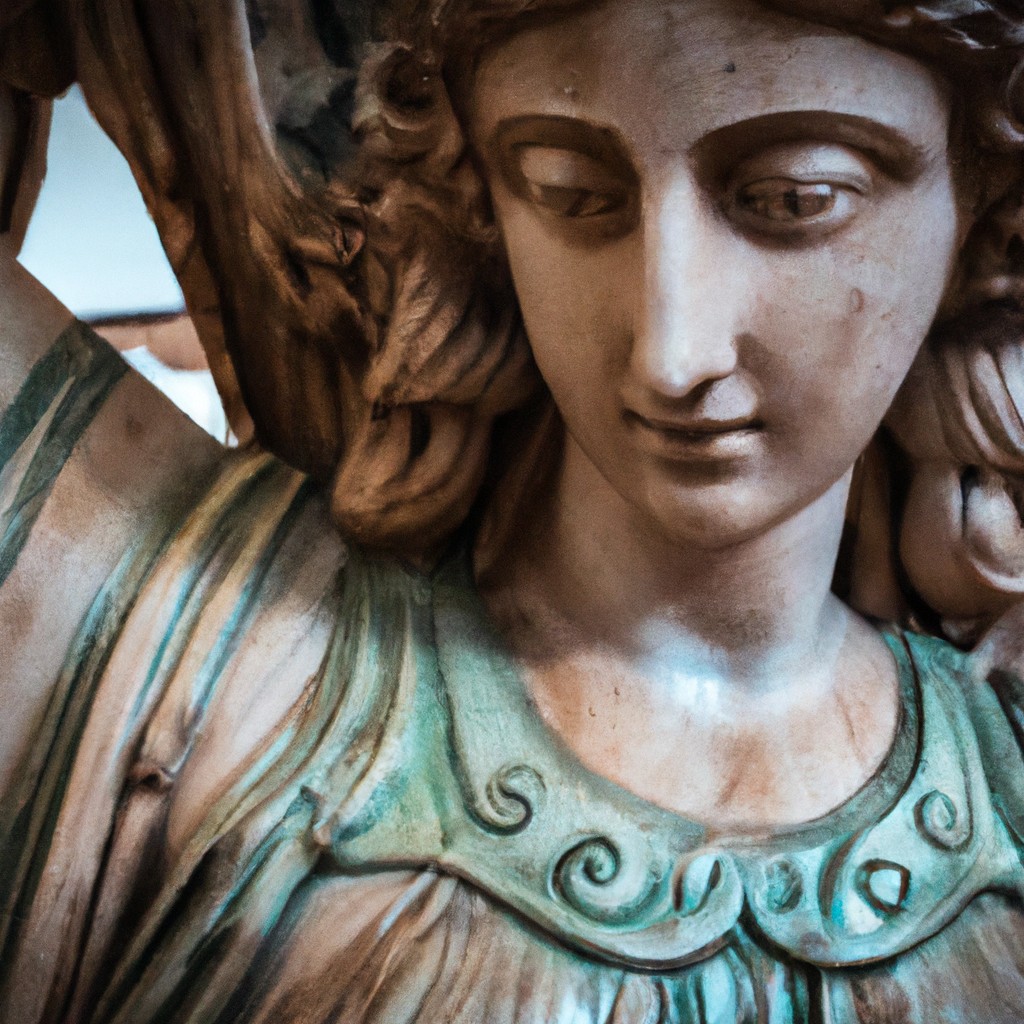Discover how Ceres, the Roman goddess of agriculture, symbolizes fertility and motherly relationships in mythology.
Look Inside:
Etymology and Origins

The name “Ceres” is rooted in the Indo-European word “ker,” meaning “to grow,” which is also the source of words like “create” and “increase.” This origin underscores her role as a goddess of agriculture, growth, and nurturing in Roman mythology. Ceres is often linked to fertility and the natural cycles of the earth, emphasizing her integral role in the sustenance of human life. Her myths and attributes highlight the dependence of society on agriculture and the respect that ancient cultures had for the earth’s natural rhythms.
Myth of Pluto Kidnapping Proserpina
According to myth, while Proserpina was collecting flowers in the fields of Enna, Pluto, god of the underworld, seized her to be his wife and queen. Ceres, her mother, desperate upon discovering her daughter’s disappearance, searched everywhere on earth. The earth, unyielding without Ceres’s attention, soon became barren as she neglected her duties as the goddess of agriculture.
Her grief was profound, affecting all earthly growth, until finally, the sun god, Sol, who sees all, revealed Proserpina’s fate. The story evolves as Ceres confronts Jupiter, who mediated an agreement where Proserpina would split her time between the underworld and the earth—thus creating the seasons.
This myth underscores themes of loss, resilience, and the cyclical nature of life. It illustrates how deeply intertwined human emotions are with the forces of nature, embodying the ancient belief that divine dramas influence earthly realities.
Significance of the Eleusinian Mysteries
The Eleusinian Mysteries, closely tied to Ceres’ mythology, were among the most significant religious rituals in ancient Greece. Originally aimed at agricultural rediscovery and renewal, these rites were celebrated with much fervor, symbolizing the rebirth of life — akin to the seasonal regeneration of crops which was overseen by Ceres after enduring the winter’s barrenness.
Enactment of these mysteries took the form of two stages: the Lesser and Greater Mysteries, held annually and spanning over nine days. Participants, sworn to secrecy, underwent ceremonial purification, followed by performances that recreated the descent and ascent of Proserpina. These actions mirrored the agricultural cycle of sowing and reaping, highlighting nature’s resilience and the human connection to the divine.
Moreover, the mysteries promised initiates more than earthly rewards; they offered insights into what lay beyond, hinting at potential immortality or an enlightened afterlife, which provided solace and meaning to the cyclical nature of life and death.
Through these practices, Ceres’ role was not just as a harvest deity but also as a bridge between humanity and the divine, emphasizing the interconnectedness of all life and the promise of renewal and rebirth.
Comparison With Greek Counterpart Demeter
Ceres is often likened to the Greek goddess Demeter, as both preside over agriculture and fertility. Their myths convey deep emotions of motherly love and sorrow due to the abduction of their daughters, Proserpina and Persephone, by Pluto and Hades, respectively.
Key features of their worship include agricultural rituals and seasonal festivals celebrating the sowing and reaping of crops. Both goddesses are symbols of maternal care and fertility, illustrating the ancient connection between divine femininity and Earth’s bounty.
However, their cultural significance diverges. Demeter’s narrative prominently features in the Homeric Hymns, central to Greek religious life, whereas Ceres’ influence is more visible in Roman legal and political institutions, highlighting the goddess’ integral role in public and civic life in Rome. Ceres also uniquely granted Roman women the privilege of owning and managing their property, reflecting her broader social impact compared to Demeter.
Influence On Roman Culture and Religion
Ceres was deeply woven into the social and religious fabric of Rome, reflecting the agrarian society’s reliance on agriculture. Her influence extended beyond mere ritual, shaping laws and societal norms.
Temples dedicated to Ceres were centers of activity, particularly during times of planting and harvest. The most famous temple, the Temple of Ceres on the Aventine Hill, also served as a hub for plebeian gatherings and official business, highlighting her role as a protector of the common people.
The annual festival, Cerealia, celebrated each April, was a testament to her importance. During this festival, Romans participated in games, theatrical performances, and, most notably, a fox hunt through the circus, where the animals’ tails were set ablaze. This vivid spectacle symbolized the clearing of decayed vegetation from crop fields, promoting renewal and fertile growth.
Furthermore, Ceres was considered a guardian of transitions, particularly in women’s lives. Her rituals were integral to important life events such as marriage and childbirth, underscoring her role in both personal and community well-being.
Through these practices, Ceres nurtured a sense of resilience and renewal within Roman society, attributes essential for both individuals and the state. Her enduring legacy illustrates the Romans’ recognition of the interconnectedness of life’s cycles and their dependence on the earth’s bounty.




